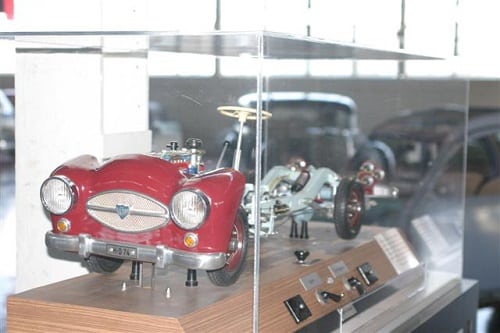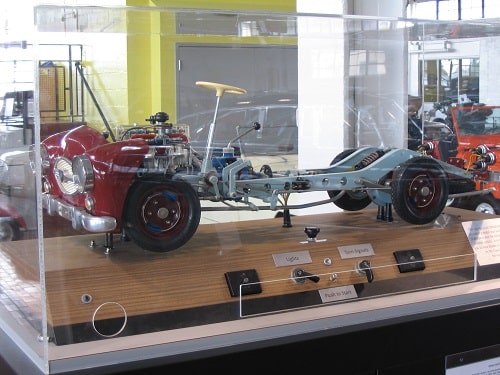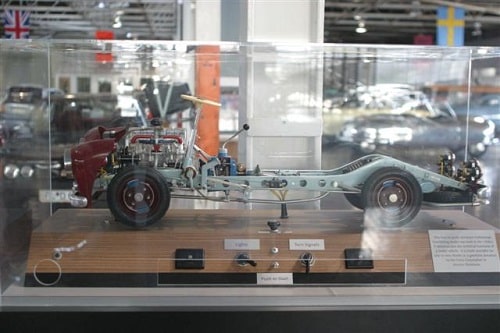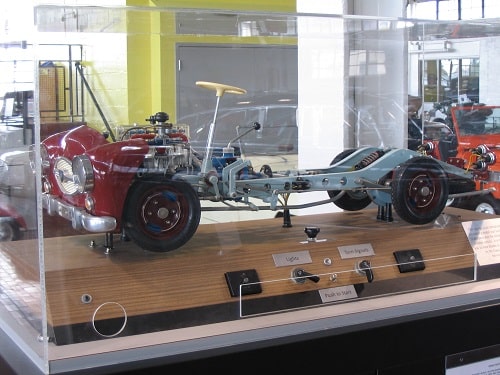
Hohm Full-Frame Modelle Car

At the beginning of the 20th century, very few people had any knowledge of how or even why automobiles worked. The German Chauffer School, founded in 1904, was created to deal with this problem. Part of the driver’s training was to gain not only an understanding of how to drive, professional etiquette, and road rules, but also to acquire a practical knowledge of the mechanical systems of automobiles.
In 1934, Emil Hohm, an Opel dealer in central Germany, and Werner Degener, a driving instruction-manual publisher, recognized the need for an instructional model (modelle) which was portable and could easily demonstrate the mechanical and operation functions of the automobile. A true-to-scale model of an Opel Admiral was produced and shown at the 1939 Automobile Exhibition in Berlin. A hit with the crowds, production soon started with six employees.
After World War II, with an upturn in the German economy, there was a period of rapid growth in the automobile industry. Driving schools sprang up everywhere, and the functional model became part of the teaching curriculum. Some schools produced their own instructional chassis, some even went so far as to make full-size remote controlled cars.
Due to the high quality and low production, Hohm models were never inexpensive, originally costing over 900 DM in 1959. Nonetheless, Hohm produced over 7000 models of all types, capturing almost 70% of the market. Their quality and good name was known all over Europe, and many were exported to Spain, Finland, Indonesia, and other countries.
The model on display is a “late” model- a Kapitan Pale rather than an Opel. While the 1950s saw a huge increase in the use of plastics, there are still many specially-cast parts present, such as the grille and headlight surrounds. This use of plastics allowed a transparent engine, so that one could see the interaction of the gears, valvetrain, pistons and crank. Even the spark plugs “fire” when they are supposed to! Virtually everything on this model works – from the headlights (high and low beams, naturally) to the brake lights. Steering gear, transmission, clutch and differential, brakes, and even the dipstick, work just like on a “real” car. It is just fascinating to watch! So accurate in their recreation, the Hohm models are even able (in fact were required) to pass TUV certification – somewhat akin to a model car passing out DOT inspections.
Rarely used anymore due to the increase in modern teaching materials and methods, many Hohm models have been relegated to display stands or dusty corners, with some finding their way into the hands of collectors. We are very fortunate to have a piece of European automotive history here for all to experience.


